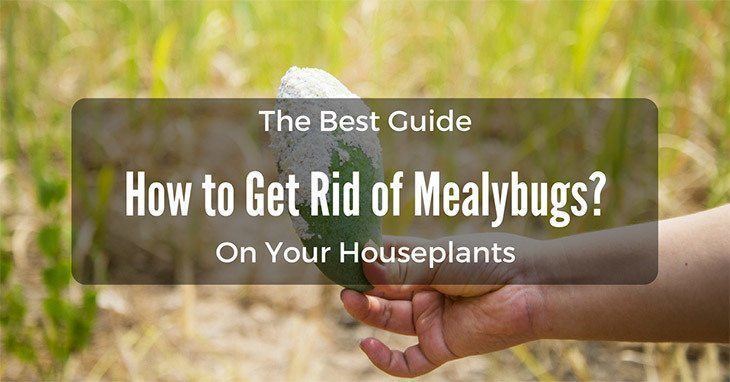The thing with houseplants is that they are susceptible to several pests’ attack as well as the fungal and bacterial infection that also occurs in outside plants. Some of the most common pests you are likely to encounter include Mites, Scale insects, Aphids and Mealybugs among other annoying pests.
Mealybugs are annoying little creatures that can sneak up on you like a plague- one day your plants look fine, the next day your plants are covered with gross, white fluffy substance.
Although no one can pinpoint the real cause of Mealybugs on your plants, some of the factors that may contribute to infestation by these pests include overwatering as well as using too much fertilizer on your plants? Well, if you go by, “Prevention is better than cure”, it will do you a great deal to learn about how to apply fertilizer effectively and how to get rid of mealybugs.
More...
How to Identify Mealybugs
Mealybugs are tiny, cotton-like, and normally hang out in white, web-like stuff on stems and leaves of succulents and green leafy plants. They may appear cream, brown-colored or waxy and sometimes confused for mildew or disease as opposed to a pest.
They love to thrive on leaf joints and leaf crevices, which makes them hard to spot and kill right away! Mealybugs tend to infect succulent plants and green plants in warm temperate areas.
It takes roughly 1-2 weeks for their eggs to hatch and most of the time they appear immobile, but they can crawl from one plant to another during the early stages.
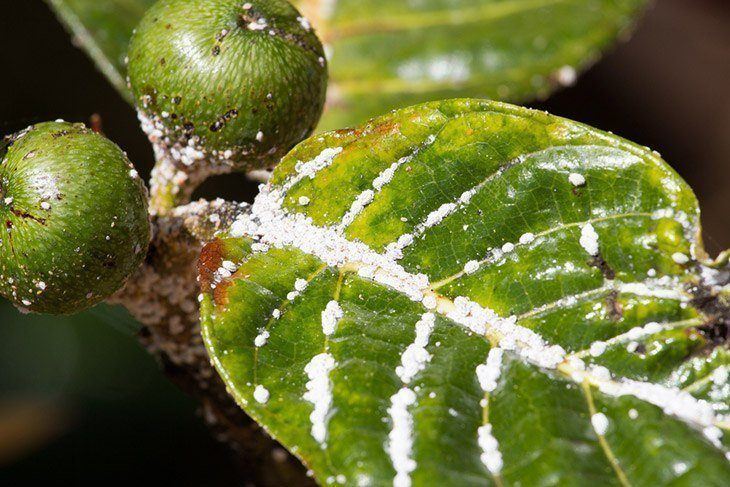
Plant infested with mealybugs
The annoying bit about Mealybugs is that they can leave the plant and hide for a long duration of time in crevices and spaces without the host plant. So just when you breathe a sigh of relief of a war you think you’ve won, they come out of hiding and re-plague your plants again when your back is turned.
They may prove to be tough adversaries, but we are smarter than them and ultimately come on top in the end.Fortunately, I’ve discovered five simple, homemade DIY tips on how you can rid your plants of Mealybugs that’s also safe for your plants too. Did I mention it’s inexpensive too?
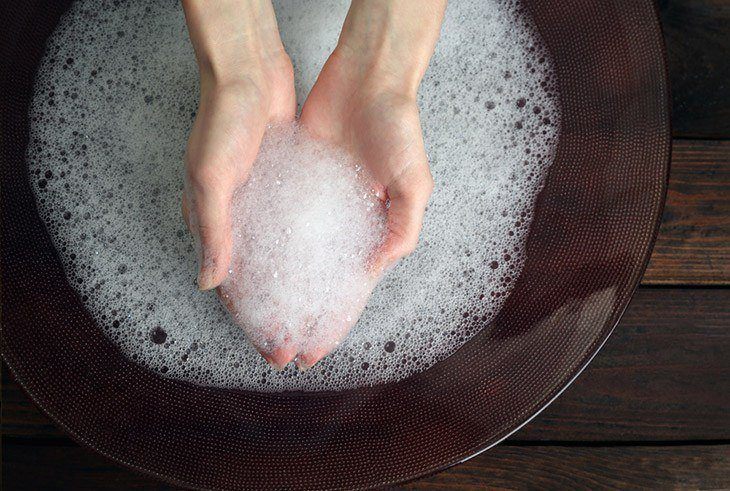
Soap and water solution
Five Amazing Tips For How To Get Rid of Mealybugs
#1: Soap and Alcohol solution
Mix 1 quart of liquid soap with ½ a cup of isopropyl alcohol; the alcohol is great for clearing the wax coating to allow the liquid soap to penetrate and kill the mealybugs. Let the plant seat for 20 minutes after spraying then rinse with water. You can repeat this process in 3 days. Watch out not to spray the plant in direct sunlight.
#2: Cooking oil
We all use cooking oil at home for cooking, but did you know you can use it to control not only mealybugs but also other pests such as whiteflies, aphids, scale insects, spider mites and thrips among others? Mix 1 tbsp. of gentle dish soap with 1 cup of cooking oil (freshly opened).
When you want to use it, add 4 tsp. of the concentrate solution to 1 pint of water then apply generously to your plants. Repeat the application process after every 7 days to keep the bugs at bay.
#3: Soap and oil solution
Add 2 tbsp. of cooking oil to 1 gallon of ordinary soap spray solution. The oil helps the soap spray solution to stick to the plant hence minimized dripping off the insects.
#4: Ordinary soap spray solution
This is the simplest to mix and use of all the others. A thoroughly mix1 gallon of water and 3 tbsp of soap flakes or you can use baby shampoo or liquid dish soap in place of the soap flakes.
Pour the mixture into a pump sprayer or spray bottle and spray the upper and lower part of the leaves, not forgetting the twigs and stems where mealybugs love to conceal themselves.
The plants shouldn’t necessarily be dripping wet, but ensure they are completely covered in the solution.
#5: Diatomaceous earth
Dredge food grade diatomaceous earth on exposed surfaces of the soil. This will not only diminish the mealybugs but also avert future infestations. Diatomaceous earth is fossilized shells and is an organic insect killer.
It works by penetrating insects’ exoskeleton and draining their tiny bodies of fluids but is completely harmless to human beings and pets.
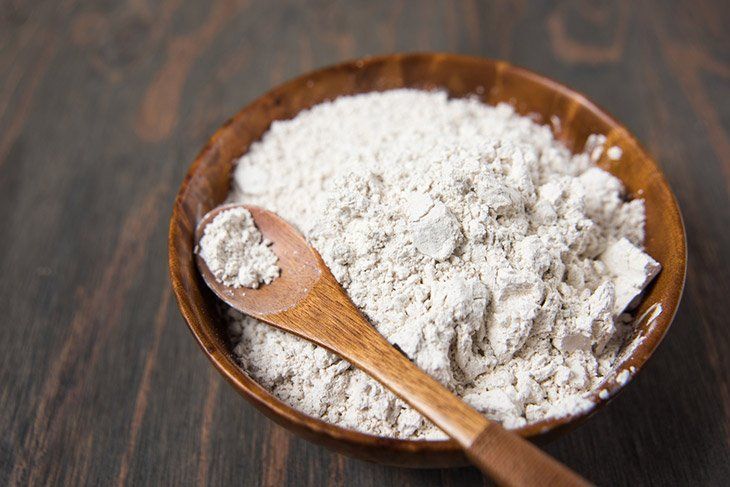
Diatomaceous earth ready for use
If your potted plant is infested with mealybugs, pour any of these solutions in a basin and submerge the leaves into the mixture. Use cotton dabs soaked with the mixture and apply on areas that are hard to reach and hidden.
Leave the plant applied with the mixture to seat for about two hours before rinsing with water, with the exception of alcohol-based mixtures. There are several other homemade solutions for killing mealybugs that you can try out.
What happens if you don’t get rid of mealy bugs on your plants?
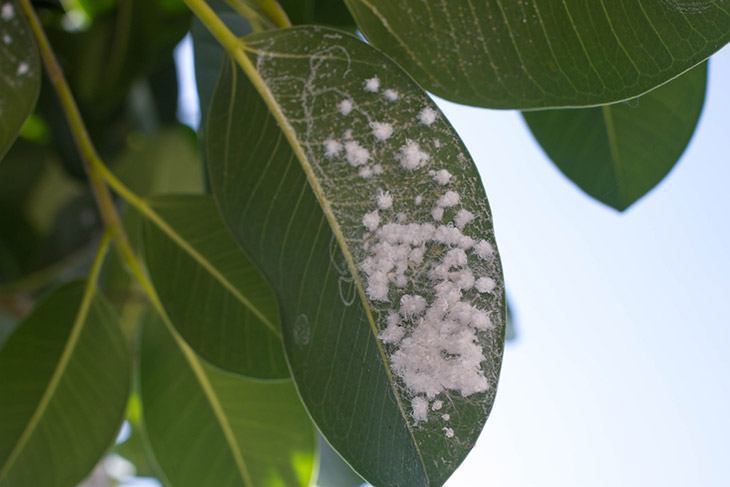
How mealybugs attach healthy leaves
Mealybugs if left untreated will suck the sap off your stems and leaves of your plant leaving it with deformed leaves, stunted growth, dropping leaves and yellowing leaves. Also, if you don’t treat mealybugs immediately, they may infect your other healthy plants.
Although the damage may not occur that fast, the plant eventually dies. Mealybugs produce a sticky substance referred to as honeydew, which attracts ants and results in sooty mold.
There are several commercial insecticides that you can use to manage mealybugs; however, some chemicals may be costly, harsh to the plants and harmful to humans and pets. Therefore, if you opt for these chemicals, make sure you do your homework well on the right chemical to use as well as its risk factors.
Parting shot!
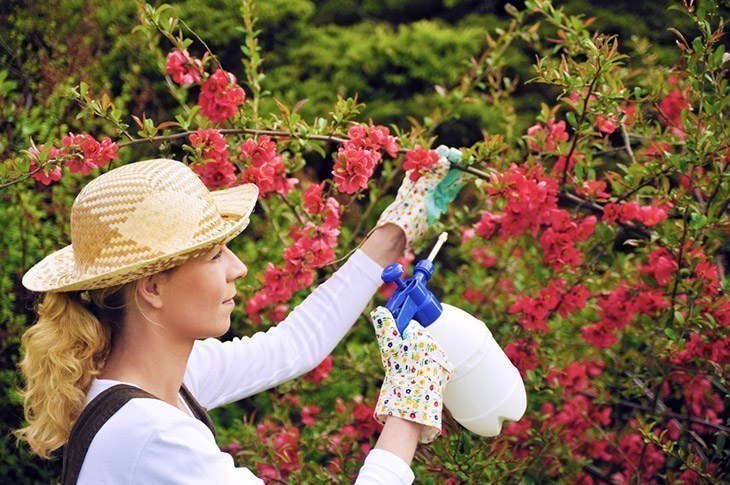
Woman taking care of her plants
Homemade solutions are usually safer to use, less harmful and easily available compared to commercial insecticides. Nonetheless, they can be hazardous to your plants if not administered properly. Before opting for these great homemade tips, first, test a small portion of your plant’s leaf and observe it for 2 to 3 days.
Via: Youtube.com
If no damage occurs to your plant, then it’s safe for use. Also remember to perform the application away from direct sunlight in order to avoid the stems, flower, and leaves of your plants from burning. To ensure you win the war on mealybugs or stay one step ahead of these clever creatures always, repeat the application process after every 1 to 2 weeks.
Like this post?
Let us know what you think by leaving a comment below. Share it with your friends, too!
Discover More:

